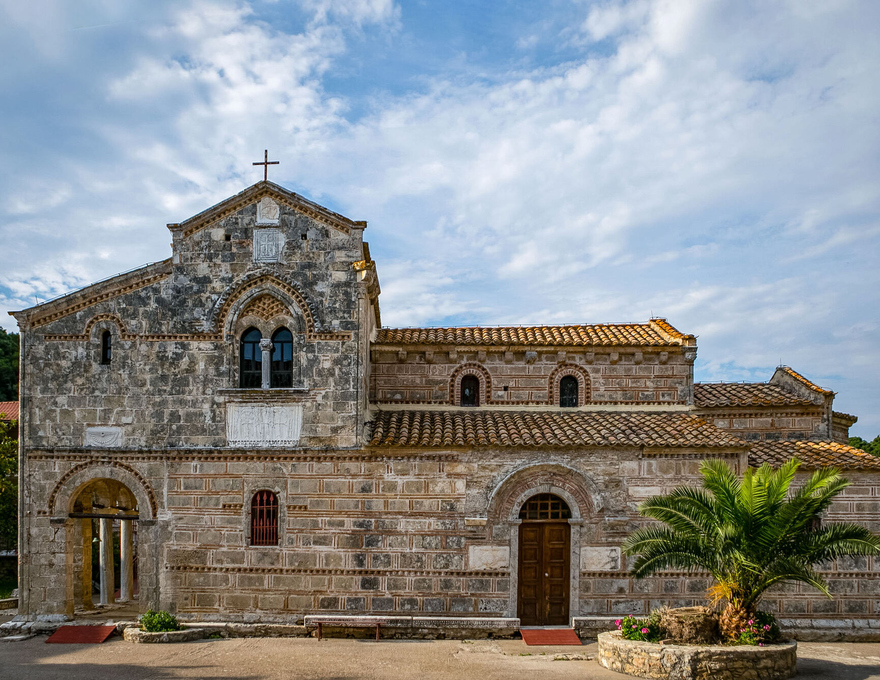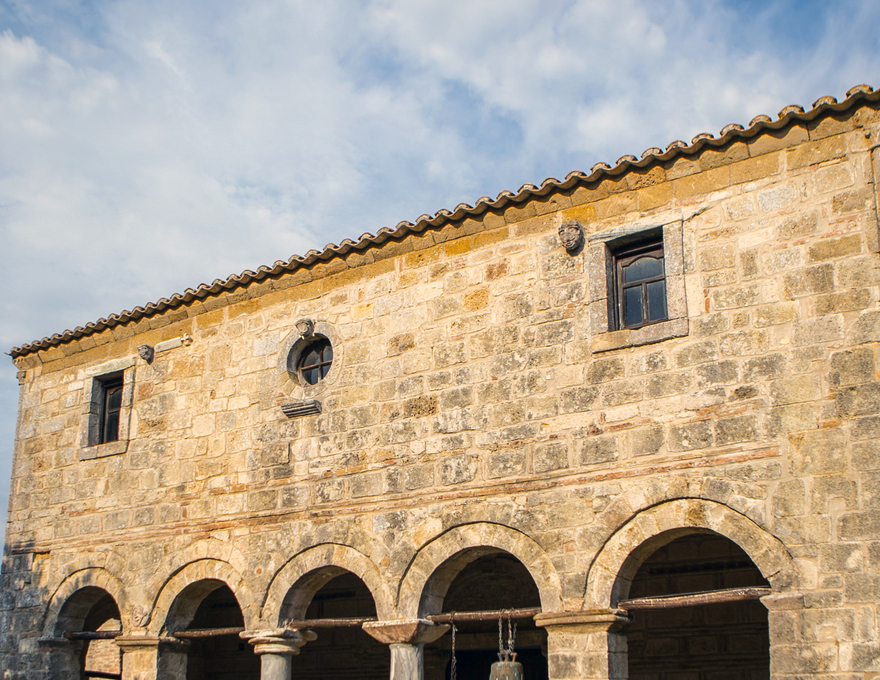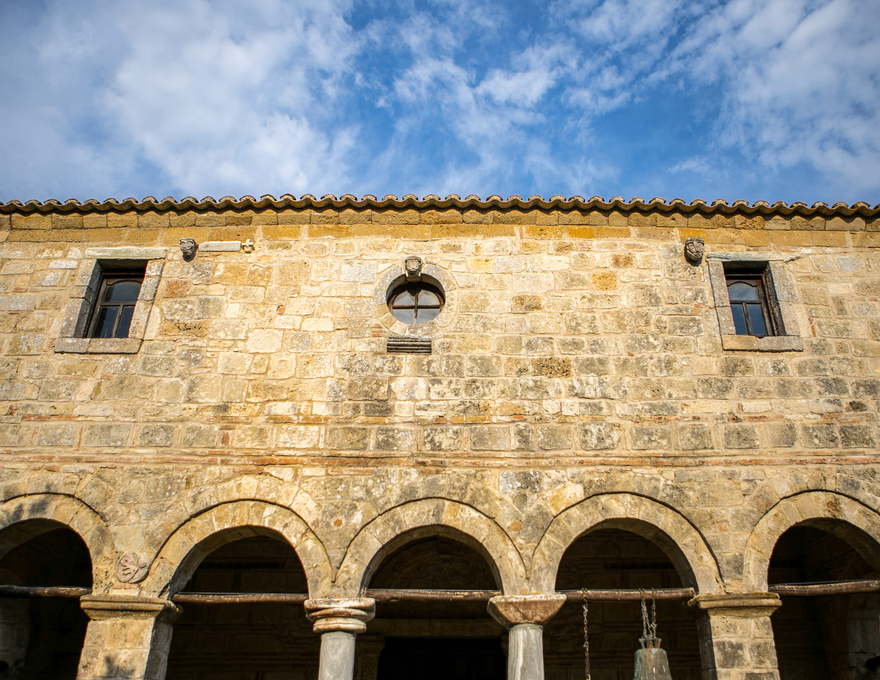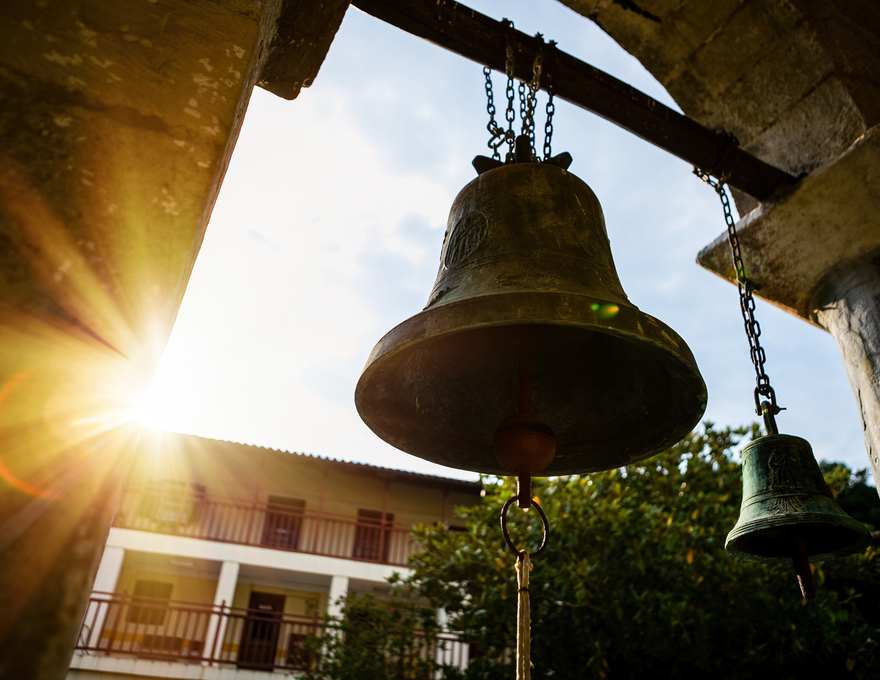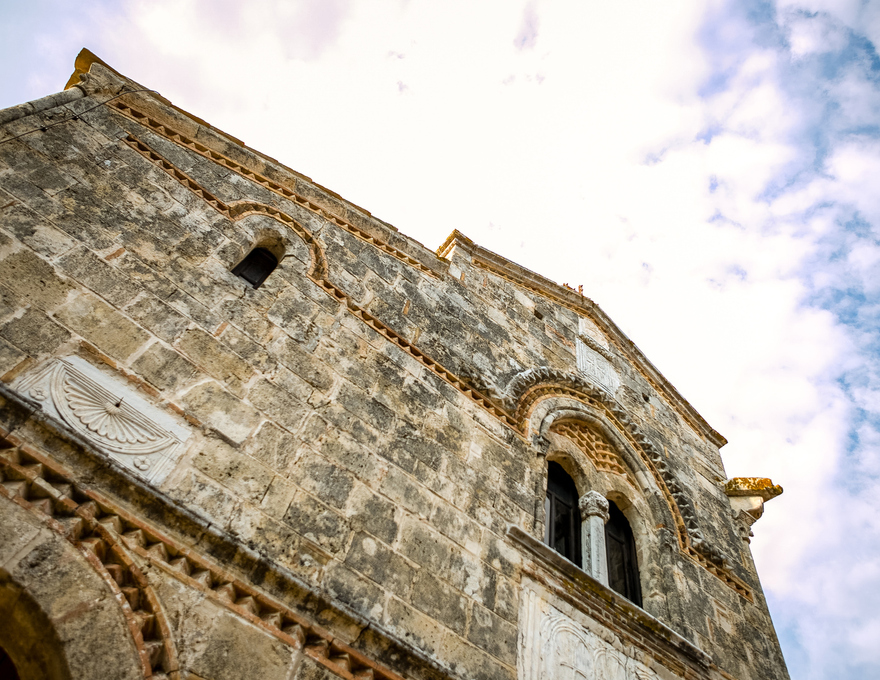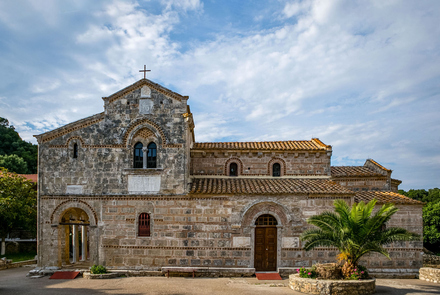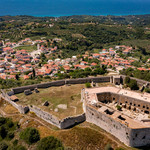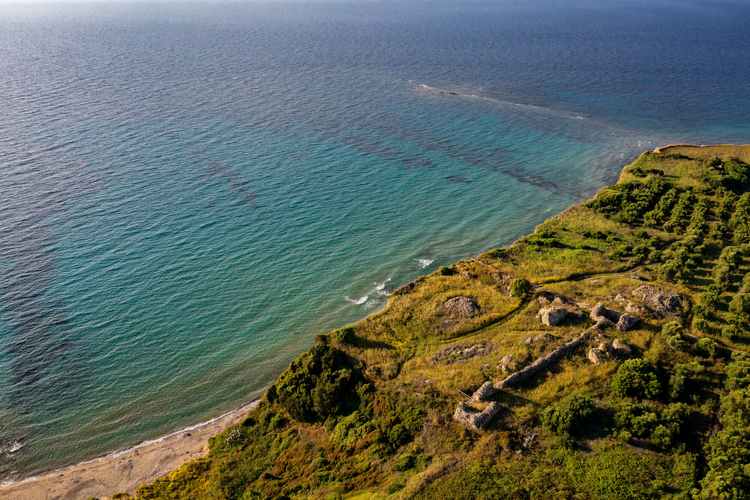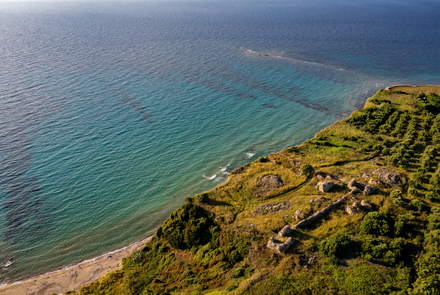Near the settlement of Kato Panagia in Kyllini, in a green valley with centuries-old olive trees, dominates the convent of Panagia (:Holy Mary) Vlacherna, which takes its name from the monastery of the same name in Constantinople.
From the original Byzantine complex of the Vlacherna Monastery, a building of the 13th century, which, however, retains morphological elements of the Byzantine architecture of the 12th century, today only the katholicon in the center of a large courtyard is preserved. The monastery seems to have suffered major damages especially during the period of the Ottoman rule, when in 1826 the army of Ibrahim Pasha set it on fire and was thus deserted. Today, around the impressive katholicon, the wings and ancillary buildings of the Monastery are completely reconstructed.
The katholicon, preserved in excellent condition, is a three-aisled, wooden-roofed basilica with a tripartite barrel-vaulted sanctuary, a barrel-vaulted narthex and three three-sided apses. To the west, an open portico is formed, which was added later, as well as the timber-roofed floor above the narthex. The interior is divided into aisles with arcades and retains traces of the mural decoration.
The monument, built in its largest part with excellent cloisonné masonry, is a combination of Byzantine and Gothic architectural elements: dentil courses, pointed windows, anthropomorphic masks that are supporting the waterspouts, composite stone cornices, masonry integrated semi-columns, Gothic capitals. The sculptural decoration of the Monastery, which includes several Early Christian or Middle Byzantine sculptures in second use, is particularly rich. A marble relief sundial stands out at the south side of the narthex. Some of the sculptures that were scattered in the courtyard of the Monastery today are housed in the Diachronic Museum of Pyrgos. The Monastery also has a rich library with relics of great value, such as authentic patriarchal seals, manuscripts, codices, gospel books, ecclesiastical vessels, reliquaries, etc.
As the Monastery has been operating as a religious institution of the Metropolis of Ilia since 1978, it is recommended to contact it before the visit to confirm the opening hours.
Copyediting: Ephorate of Antiquities of Ilia

